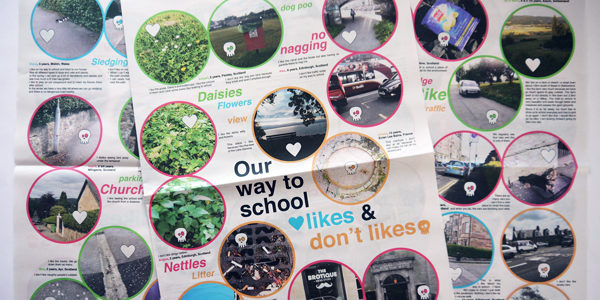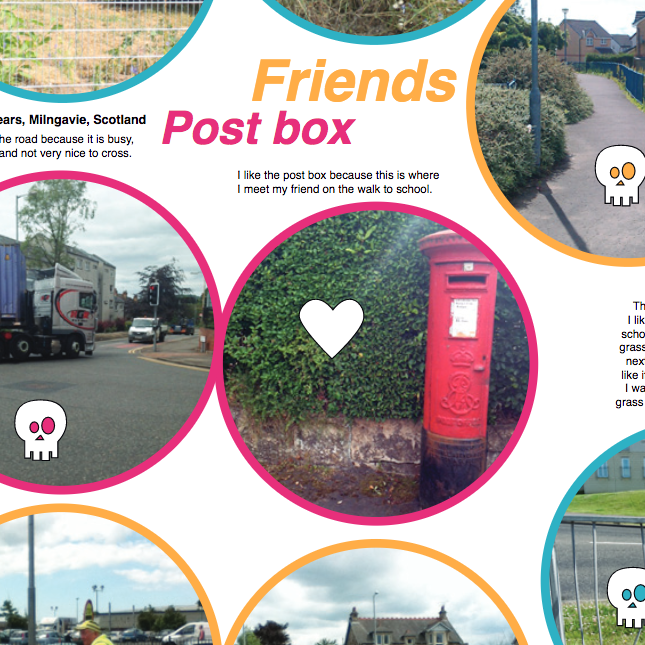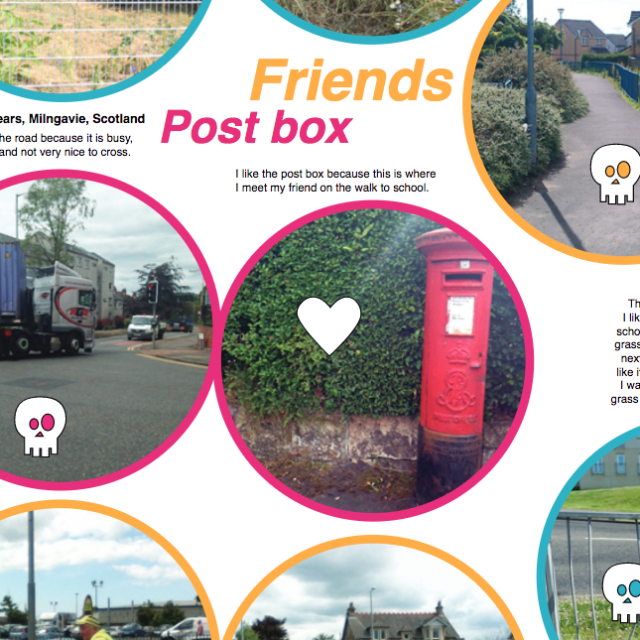We also like to undertake playful, participatory research investigating views on our open spaces and challenging our own perceptions of how we think the public is actually using the space. What is important when it comes to public space?
We were looking for an open-minded audience, who are interested in the ‘amenity’ of space regardless of budgets, technical concerns, practicalities and political agendas or design guides and inspirations. So we decided to ask the children. The results are somewhat surprising.
First we prepared postcards to explore likes and don’t likes on the children’s way to school; an every day public space, which they use and interact with on a daily basis. In return we received photos and descriptions from 28 pupils in Scotland, Wales, Germany, France, Switzerland and South Africa. The children ranged from the age of 3-14 years, half of them 8-10 years old and with an equal gender split.
Likes
The children’s most liked features along their way are not colourful play equipment or playful surface markings, but are surprisingly simple:
- Plants (colourful flowers, long grass or a magic tree)
- Views over the landscape towards specific features (church, nice buildings, landmarks)
- The open sky (with an amazing sunrise)
Specific features along their way are also of importance to the children:
- Meeting at the post box (used as a marker)
- As a point of interest (the canal with its boats)
- Activities (playing trains on drainage channel)
Accessible routes (short-cut to school) and spaces for activities such as a grassy field for a play with friends get also a mention. Another important element seems to be personal contact, a friendly exchange with the neighbour’s cat or the lollipop lady/man.
Don’t likes
The most common ‘dislike’ along their way to school is traffic and everything that comes with it: Obscured views, busy junctions, unsafe crossings and noise. Traffic was closely followed by unsightly and dirty streets; due to poo, litter or broken fences.
Interestingly the ‘don’t likes’ can be summarised in short as: traffic and unsightly streets, whereas the ‘likes’ feature quite a range of themes with all of them arguably, very important for good town planning, urban realm and place making: Routes for circulation, spaces for activities, views and landmarks to connect and recognise, plants/features to bring variation, interest and colour to our urban open spaces and contact to bring life into the public realm and to activate them. All these are principles taught at university, but often compromised by budgets, programmes and politics. Is it time to listen more to our children?
50 copies of this newspaper were printed by ‘Newpaper Club’ in September 2014.



